How AWS integration works#
Here's a walkthrough of the main concepts related to the AWS IoT Core - Coiote IoT DM integration that will help you understand the role of each of the integration components and how they are employed for the benefit of LwM2M device management via the AWS services.
Things#
Within the AWS IoT Core - Coiote IoT DM integration, things are the AWS representations of LwM2M device entities managed by the Coiote IoT DM platform. They are used to mirror device state, as well as collect, process and act upon device data on the fly using a connection protocol of your choice.
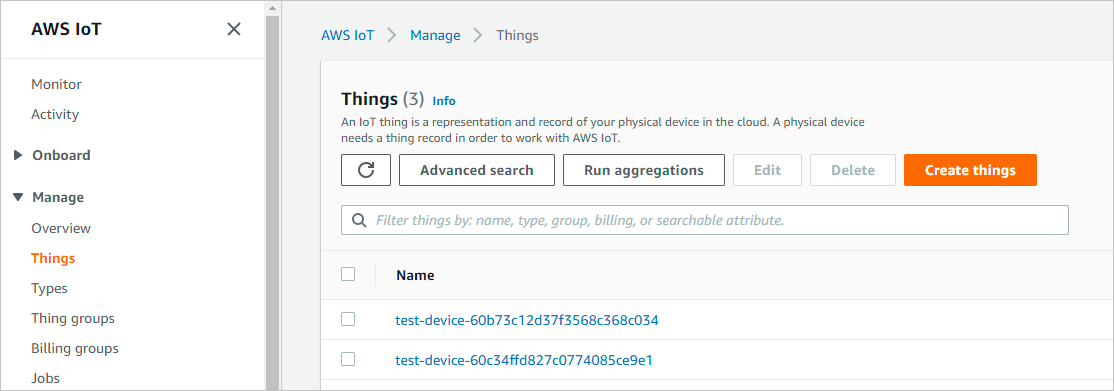
Note
Things are automatically added to AWS IoT Core upon completing the integration setup and successful device connection.
Thing types#
Thing types are containers that store configuration and other device-related information shared by all Things of the same type to simplify their bulk management. Within the integration, they are created automatically when a new device is added to AWS from Coiote IoT DM and they are based on device Manufacturer and Model name. In case a new device with a specific Manufacturer and model name pair can be matched with an existing thing type, then it will be associated with it automatically.

Note
Note that you cannot modify a once created thing type, but you can deprecate (allowing no new devices to be associated with it) or delete it when there are no things associated with a given Thing type.
Device Shadows#
A device shadow is a structure that stores the device state and represents it in the form of a JSON file, making the device data available to applications and services regardless of device connection to Coiote IoT DM. To synchronize device state information between the Coiote IoT DM and AWS IoT Core, shadows feature the mechanism of reported and desired values.
- Reported values section - presents the current device state as reported by the device itself (and mediated by Coiote IoT DM) in a JSON file structure within a device shadow.
- Desired values section - used for requesting changes in the reported section of the device Operation shadow.
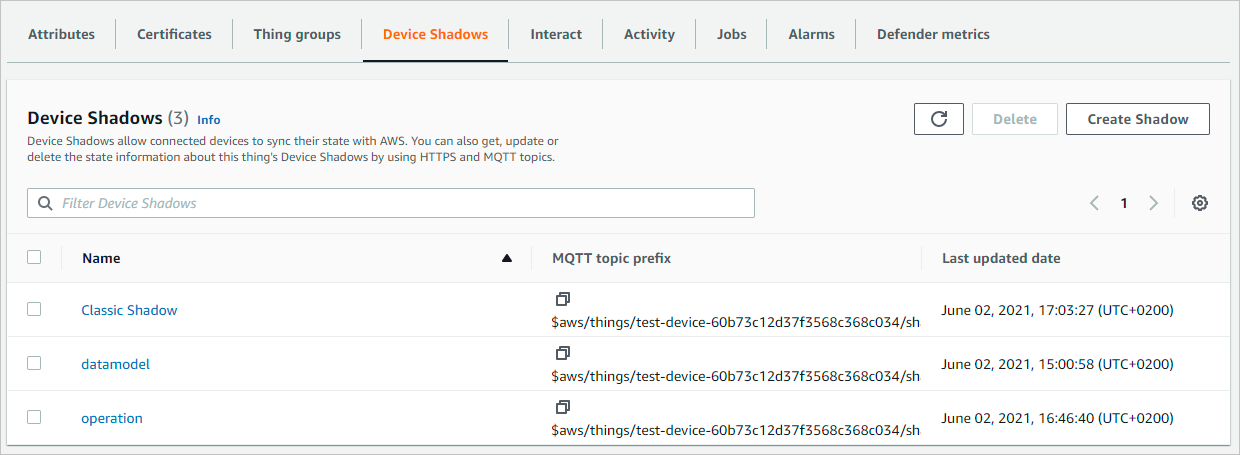
For the purposes of the integration, a default of three different shadows is established for each connected thing: an unnamed shadow, a datamodel shadow and an operation shadow.
Classic Shadow#
The Classic shadow (also unnamed shadow) is used for storing connectivity parameters of a LwM2M device (such as registered lifetime, last lifetime refresh, queue mode, LwM2M URI, device registration status etc.). The reported state refreshes upon each change in these parameters that is reported by Coiote IoT DM (Register or Update message from device).
Operation Shadow#
The Operation Shadow is where you request your LwM2M operations to be executed. To this end, the desired values of the device state are used. Thus, you can perform any LwM2M 1.0 operation on the device by defining it inside the desired values section. Also, to check if the operation execution was successful, the reported values section of the Operation Shadow is used (but only in case of the READ, WRITE and READ COMPOSITE operations).
Communication flow#
A value change using the desired device state is formulated as the one below:
{
"state": {
"desired": {
"operation": "write",
"keys": [
"LwM2M Server.1.Lifetime",
"Device.0.UTC Offset"
],
"values": [
68,
"+02:00"
]
}
}
}
Once a value change in the desired section of the operation shadow is saved, a chain of events starts:
- A change in the
desiredsection triggers the operationRequest rule. - The operationRequest rule sends a request to AWS Lambda.
- AWS Lambda validates the request and forwards it as an event to Coiote IoT DM, making it schedule a task and initiate a device session.
- Coiote IoT DM communicates with the device.
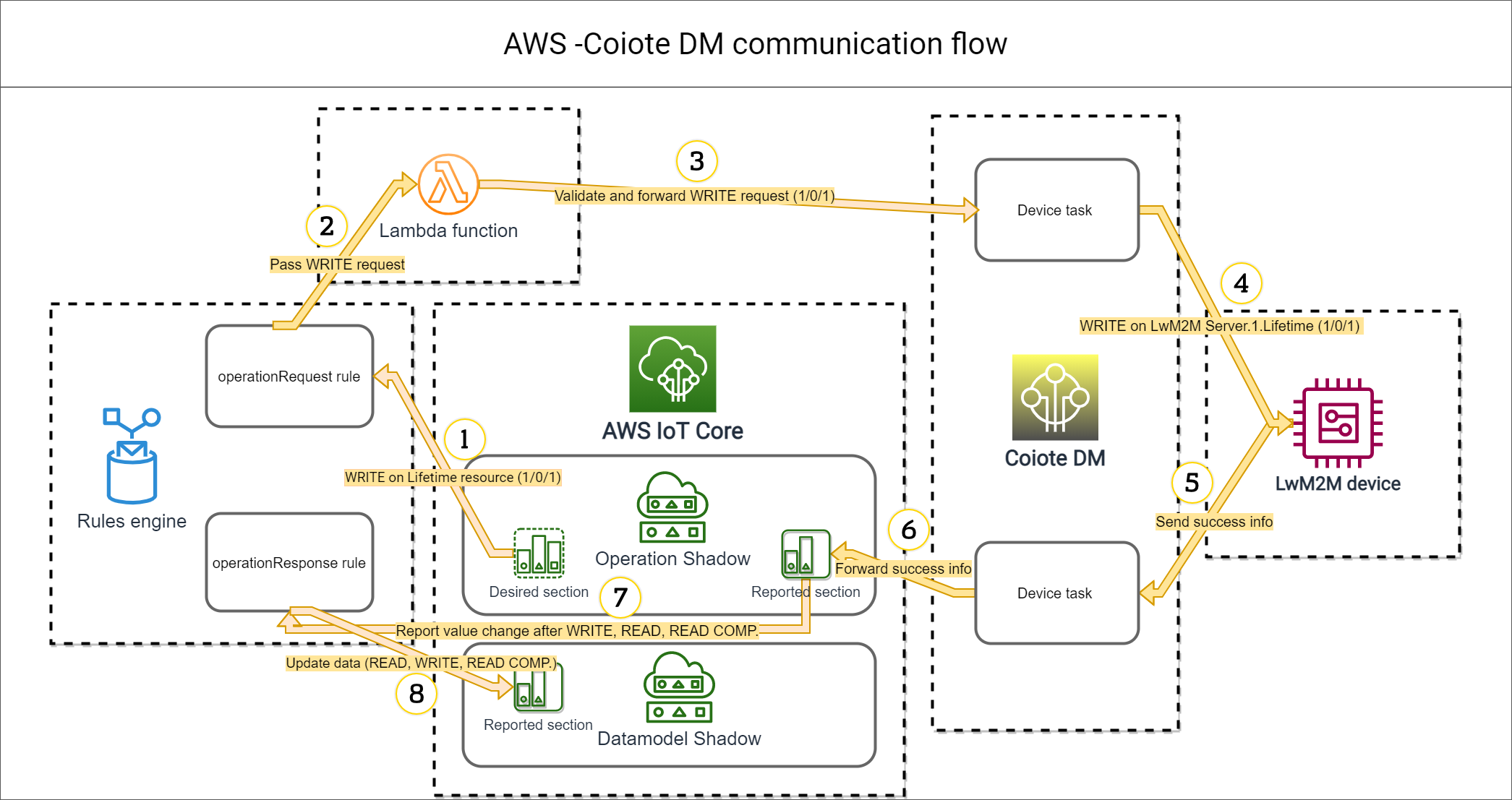
- The device responds to Coiote IoT DM with the operation result.
- Coiote IoT DM forwards the device response back to the Operation Shadow and the results are published in the
reportedsection. - The change in the
reportedsection triggers the operationResponse rule. - The results are then republished using the operationResponse rule to the Datamodel shadow (but only in case of the READ, WRITE and READ COMPOSITE operations).
Datamodel Shadow#
The Datamodel Shadow is the place where the cashed data model of the LwM2M device is stored. What this means is that it is a "read-only shadow" that keeps the most recent record of the device state as it has been reported by Coiote IoT DM - no device operations can be performed from here.
The Datamodel Shadow is updated in case of the following events:
- Device Register message that comes from Coiote IoT DM,
- Device Notify and Send messages,
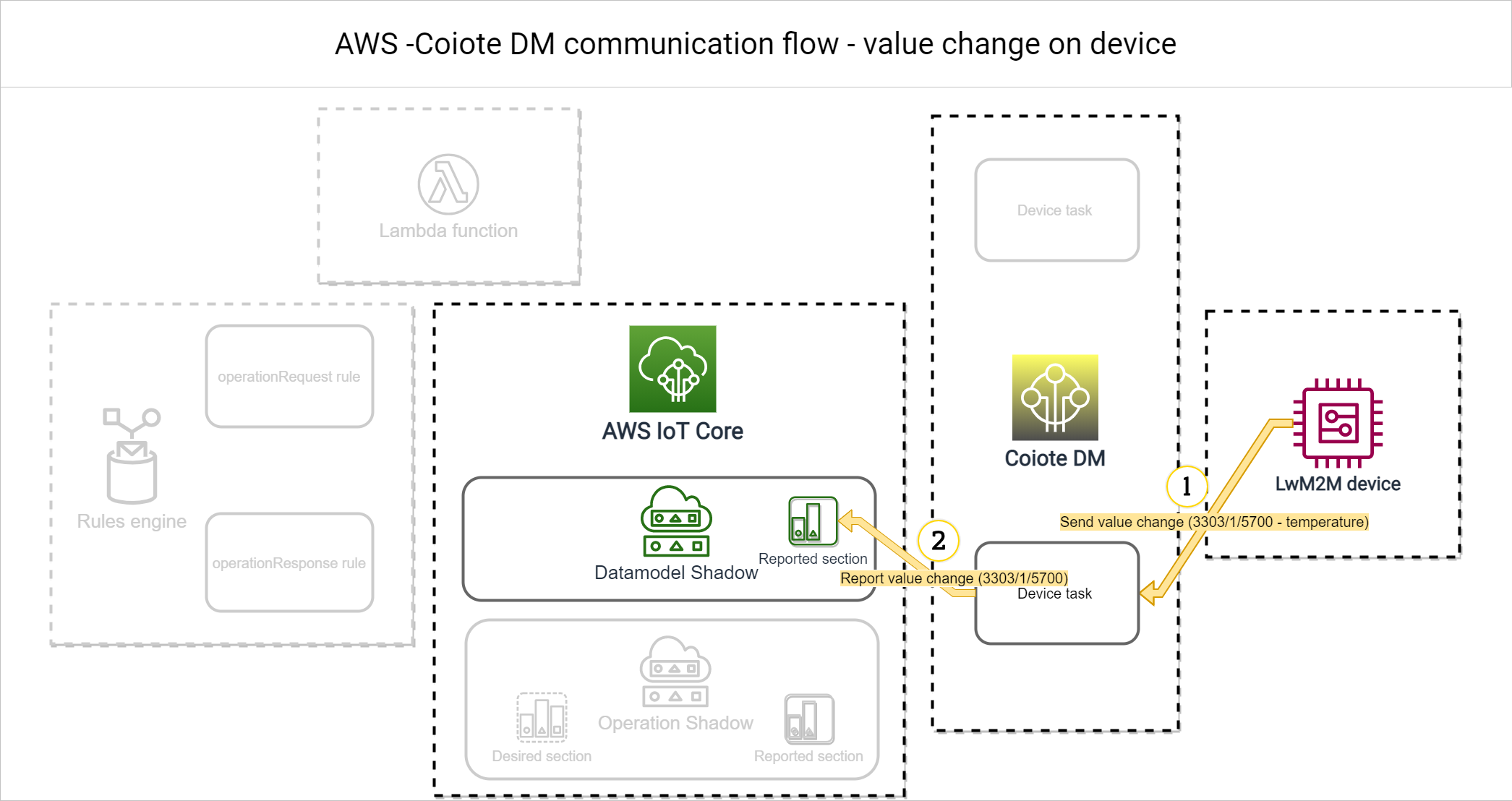
- Republishing operation results from the Operation shadow to the Datamodel shadow using the operationResponse rule.
CloudWatch logs#
CloudWatch collects and keeps a record of all the logs generated on the AWS-side of the integration. You can use these data for analysis and troubleshooting in case of all the AWS integration components:
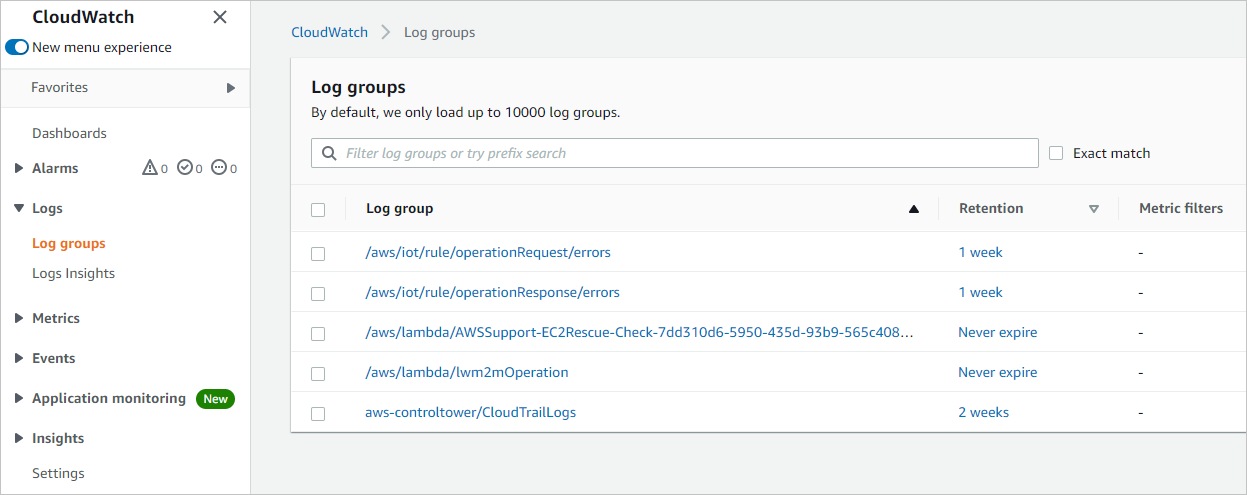
- Device Shadows (the data plane),
- Things and Thing types (the control plane),
- The Rules mechanism,
- AWS Lambda.